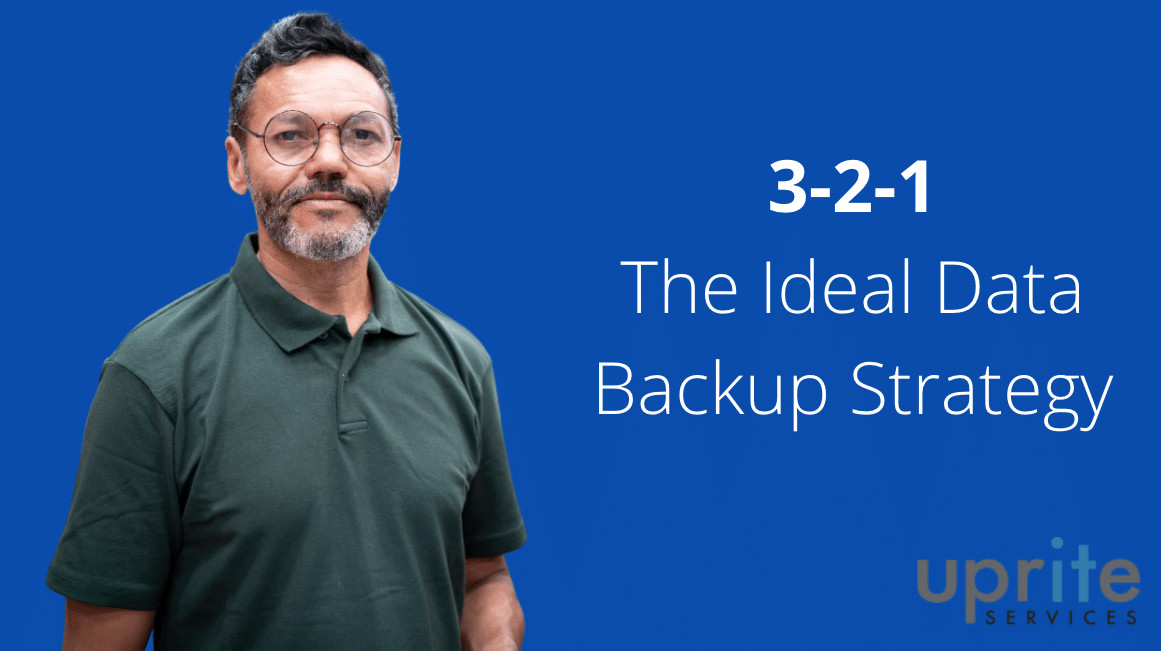
3-2-1: The Ideal Data Backup Strategy
Secure data is the foundation of any business. From accounting records to client emails, the amount of data that your business depends on might seem surprising when summed up.
All your data carries the same risk of being lost in some unfortunate, unexpected moment: an employee clicking on the wrong email link; a cyberattack compromising your servers; a hard drive failure.
That data loss can have serious ramifications. Per the National Archives and Records Administration in Washington D.C., 93% of businesses that lose access to their data center for 10 days or more following data loss file for bankruptcy within one year; half of those businesses file for bankruptcy immediately following the loss.
Luckily, protecting yourself against data loss is as simple as routinely backing up your data. It seems straightforward enough on the surface: copy your files onto an external hard drive and update that copy on some regular interval.
However, like all IT matters, it isn’t that simple. That one backup of your data carries with it the same vulnerabilities as your main drives. In a particularly awful catastrophe, like a hurricane sweeping past your corporate office, you might lose both your original data and its copy.
So you need a data backup strategy and policy that is airtight against these unlikely possibilities. In truth, from all the corporate backup strategies out there, you only need to remember three numbers: 3-2-1.

The 3-2-1 Standard
The principal benefit of the 3-2-1 backup standard is its ability to maximize redundancy while still keeping all of your data within easy reach. This ensures that your data is safe at all times—in at least one form in one location.
It boils down to three key factors:
- 3 Copies of your data
- 2 Formats for your data
- 1 Offsite backup for your data
3 Separate Copies
That level of risk that remains with having just one copy of your original data can be greatly mitigated by having a second, additional copy. While one or even two copies can potentially fail, the probability of all three simultaneously being damaged or destroyed is negligible.
Those copies should be separate, as well. Having two copies of your data on one thumb drive means that the USB is effectively just one copy. Why? In the event of one damaged USB, both copies on it could be rendered unreadable.
Aim for three separate copies to provide your data with the redundancy it needs, so your business can keep running without a hitch even if one copy is lost.
2 Data Formats
Something that a few corporate backup strategies fail to take into account is the limitations of your hardware. Having three backups is a good fundamental practice, but you have to be able to access them for those backups to serve their intended purpose.
Keeping all of your backups on external hard drives does well to preserve your data’s outright existence, but a missing SATA cable or the drives residing in a faraway satellite office may prevent you from utilizing that data. This could spell complete downtime for your business, which means lost productivity and lost revenue.
Solution: have at least two different formats for your backups, so you can always access them when you need to.
1 Offsite Backup
Another crucial aspect of your data backups is where they’re being stored. Having three copies of your data doesn’t matter if all three copies are placed in the same drive or cloud; a single cyberattack on your network holding all three copies could be enough to wipe all of your data.
That extends to physical risks, as well. A flood could potentially damage an internal hard drive, an external drive, and a company cloud in a single event. Despite having three copies in three locations and two formats, this hypothetical company would face catastrophic data loss and be unable to function following that flood.
So, store one backup offsite in a data repository that is physically separate from your business—that way, your data is safe even in the event of physical theft or a regional disaster.
Uprite Services can help you meet all of these data protection needs. Our team of IT specialists can guide you through the process of tackling those 3-2-1 corporate backup strategies, connecting you with all-in-one turnkey solutions that keep your business operational and secure even in the difficult, stressful event of data loss.
Safeguarding your data protects all the investments you have made for your business, as even the best IT infrastructures can have their moments of hardware failure, external damage, or compromised cybersecurity.
Protect your business: time spent seeking a data backup solution is never time wasted.

Stephen Sweeney, CEO of of Uprite.com, with 20+ years of experience brings tech and creativity together to make cybersecurity simple and IT support seamless. He’s on a mission to help businesses stay secure and ahead of the game!

